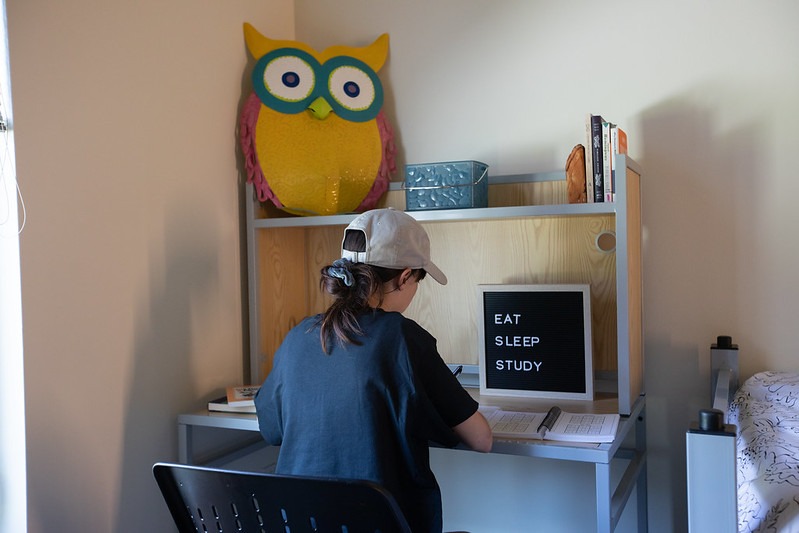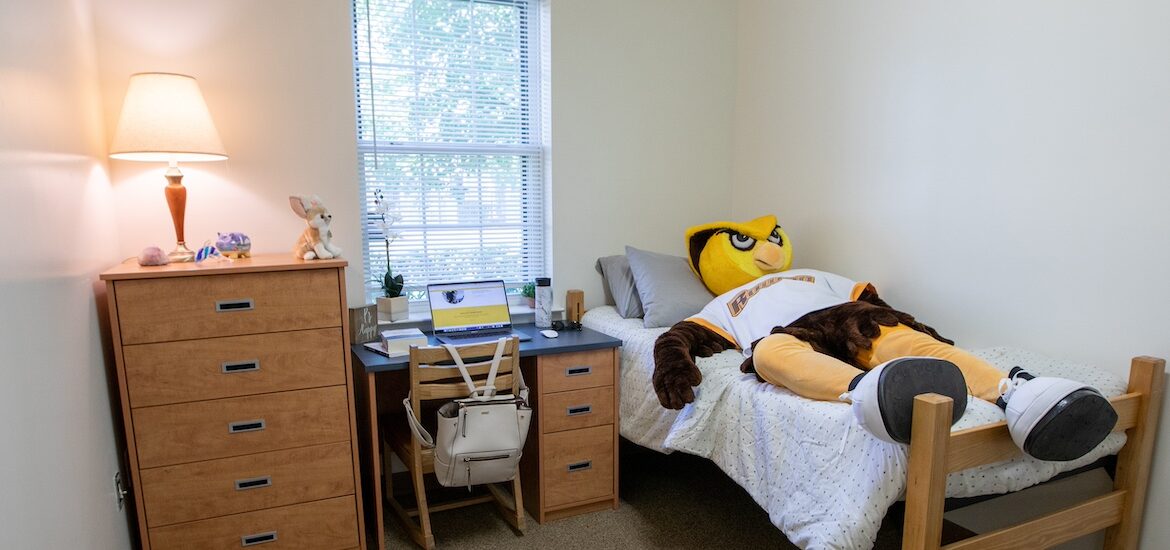Part of a series with Rowan University’s Wellness Center, this collaboration aims to educate students about personal well-being options. For further updates, follow @rowanuwellness on social.
Written by Wellness Center intern Anmol Patel, molecular & cellular biology major
When students first walk into their dorm room on move-in day, they are greeted by plain walls, minimal furniture and fluorescent lighting. While most people do not think about how their surroundings affect them, science suggests that the colors in our environment can have a significant impact on mood, stress levels and academic performance. Understanding color psychology could be a game-changer in creating a space that allows students to feel relaxed, comfortable and focused.
What is Color Psychology?
Color psychology is based on how the brain processes wavelengths of light, influencing emotions, cognition and physiological responses (Cherry). Research in color psychology states that different colors trigger specific emotions. Some colors promote calmness, while others heighten stress. For students, strategically incorporating the right colors in their environment could help boost motivation, reduce anxiety and enhance focus.

How a Few Colors Affect the Mind:
- Red: a powerful, high-energy color that stimulates excitement and urgency. While it may help with physical activity and motivation, too much red in a study environment could increase stress levels, making it less ideal for long study sessions (“Birkman Colors”).
- Yellow: a bright, cheerful color that can enhance creativity and optimism. However, excessive yellow could lead to restlessness (“Color Psychology”).
- Green: a de-stressing color that is associated with nature and balance. It is easy on the eyes and promotes concentration, making it a great color for studying (“Color Psychology”).
- Blue: a calm color that is linked to tranquility and concentration. It has been shown to lower stress levels and improve cognitive performance, making it a great choice for students who need to stay calm while tackling assignments (“Birkman Colors”).

Take Charge of Your Environment Through Color
Students can take control of their environment by adding a pop of color into their lives. Here are a few simple ways to test out color psychology:
- Revamp the Study Space: use blue or green accents in a workspace to enhance focus and calmness
- Change Up the Dorm Aesthetic: add plants, tapestries, or bedding in calming colors like green or light blue could make a room feel more relaxing
- Use Color to Influence Mood: wear yellow on a day when extra energy is needed, or choose a red water bottle for motivation during workouts could make subtle yet meaningful differences
- Switch Up Digital Spaces: customize laptop or phone wallpapers with colors that match the desired mood to create a more intentional mindset
While color psychology is not an exact science, it offers an interesting way for college students to take charge of their surroundings and well-being. Whether it is changing dorm decor, choosing a cute study space, or simply being more mindful of the colors that surround them, experimenting with color could provide an unexpected boost in mood, focus, and mental health. In a college setting where stress is high and time is limited, even small changes like adding a blue desk lamp or a green plant, could make a meaningful difference in productivity and relaxation. So, next time you sit down to study or unwind after a long day, take a moment to notice the colors around you. They might be influencing your mood more than you think.
Work Cited
“Birkman Colors.” Birkman, birkman.com/resources/articles/birkman-colors.
Cherry, Kendra. “Can Color Really Influence Your Mood and Behavior? Here’s What to Know.”
Verywell Mind, 20 Feb. 2024, www.verywellmind.com/color-psychology-2795824.
“Color Psychology.” Color Navigator Blog, blog.colornavigator.net/color-psychology.
Internship & Experiential Learning Stories
Learn how Rowan Profs go Beyond the Classroom to grow professionally, as well as personally, through internships and other experiential learning. Experiential learning includes hands-on learning opportunities provided through research, student clubs, campus leadership, student worker jobs, service-learning projects and volunteerism. In addition, Rowan’s Office of Career & Professional Development provides career support that’s more than just advice – it’s events, connections and real guidance to help students thrive after college.
Additional Student Wellness Stories
Keep reading student wellness stories to learn how Rowan Profs support their mental, physical and emotional well-being. Through Rowan Thrive, Rowan University provides a comprehensive framework designed to help students live in alignment with their values and cultivate resilience across six core areas of well-being.

